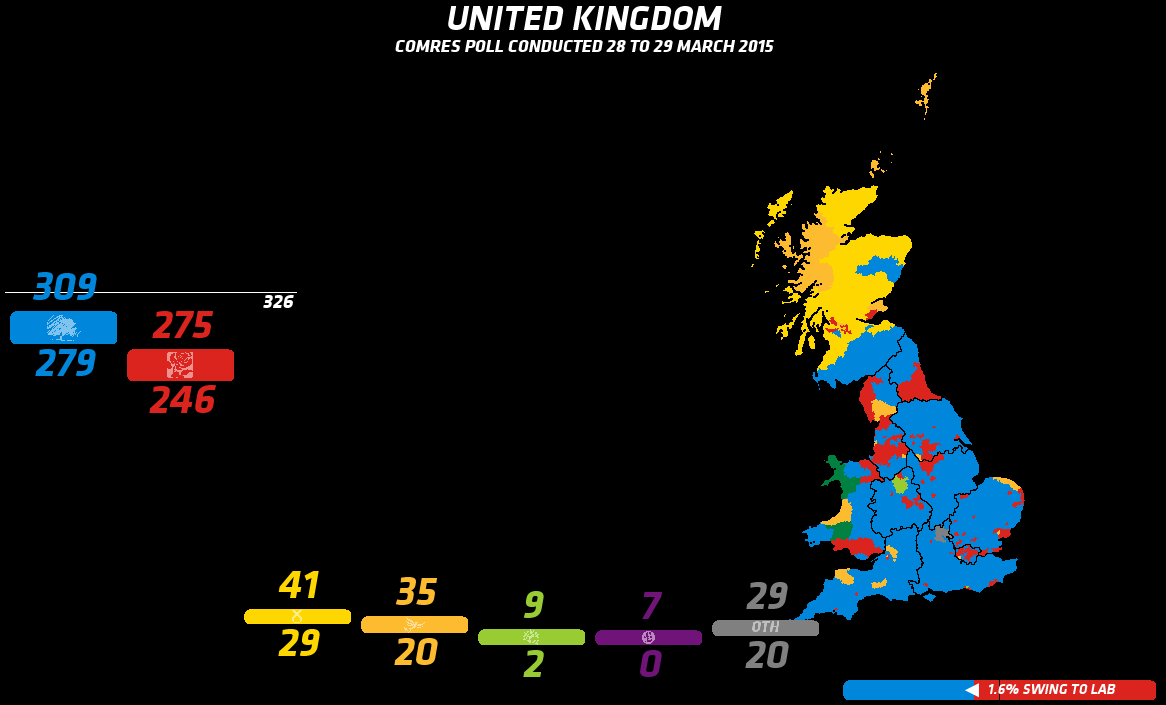Yesterday saw the release of the first two opinion polls since last week's leaders' programme on Sky News and Channel 4. The first poll was conducted by YouGov and published in the Sunday Times. It suggested that Labour had a four-point lead, which would give it a choice in terms of who it could turn to in order to govern.
Later that evening, a second poll was released by the Daily Mail and ITV News conducted by Comres. This poll showed a four-point lead for the Conservatives, which would give them a shot at forming another government.
Two polls, conducted around the same time, showing two different stories.
The fact is, quite simply, each opinion poll is subject to a margin of error. This isn't necessarily a result of an error in the process with the pollsters, but more the randomness of picking the voters to ask.
If a pollster were to pick 1000 people at random from the UK, you would expect a margin of error of around 3.1%, 19 times out of 20. What does that mean? It means that, 95% of the time, the percentage reported for each party will be within 3.1% of the population as a whole. However, for pollsters who poll every day (which I expect will be most pollsters, now that the campaign has started), you should expect each of said pollsters to be off by more than this 3.1% on two occasions between now and polling day.
I think that both of these polls are simply blips from each of these pollsters, and the next polls will probably come back into line. This belief is strengthened by the two polls released today, one from Populus and one from Lord Ashcroft, both of which show a much tighter race.
When all of these polls are blended together, we get an overall story of too close to call, with around 90% odds of Labour finishing with the most seats and 10% of the Tories finishing ahead, but neither with a realistic chance of forming government on their own.





No comments:
Post a Comment